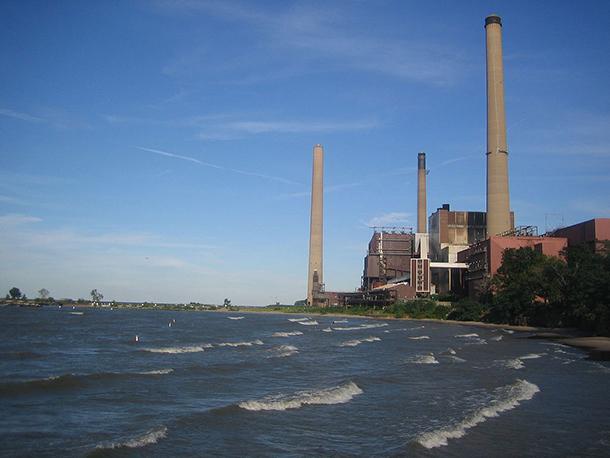Pollution from America’s power plants is a deadly serious problem, a new study shows
Avon Lake, a coal-fired power plant near Cleveland, has been out of compliance with the Clean Air Act for at least three years. Its particulate pollution is responsible for hundreds of premature deaths, according to PSE Healthy Energy and NextGen Climate America.
Pollution from power plants in Ohio and Pennsylvania caused up to 4,400 premature deaths across the country in 2015, according to a new study.
Residents closest to the plants, near Pittsburgh and Cleveland, had the highest premature death rates, but particulates and other pollutants from those power plants increased mortality and morbidity as far away as Maryland, New Jersey and Massachusetts. Poor and disadvantaged communities shouldered most of the burden of this environmental risk, which included an estimated $38 billion in health costs and impacts.
The study was conducted by researchers at the think tank Physicians, Scientists, Engineers for Healthy Energy and at NextGen Climate. It had three main components, according its lead author, Elena Krieger.
First, the researchers examined demographic, socioeconomic and existing environmental and health burden data on communities living near power plants in Ohio and Pennsylvania. Then they looked at existing environmental hazards at those plants, such as on-site releases of toxic chemicals and coal ash pits where the plants dispose of leftover ash after coal combustion.
In the third part of the study, they looked at emissions from the power plant stacks and particulate matters associated with these emissions, which can have health impacts not only within the state, but well into neighboring states and far beyond, Krieger says. The highest impacts were in counties in the states of Ohio and Pennsylvania, but the top ten 10 counties with the highest health impacts included counties in Maryland, New York and New Jersey. The researchers also found effects as far away as Maine and North Carolina.
To calculate how these power plants cause health effects that result in premature death, the researchers used an EPA model called COBRA — Co-Benefits Risk Assessment Model. They took existing historic emissions of sulfur dioxide and nitrogen oxides, which are measured at every power plant every hour, and combined this data with an atmospheric model that looks at how those pollutants react in the atmosphere to form particulate matter and maps where the pollutants go in relation to population centers. Based on how many people live in each county, they estimated how much particulate matter individuals living in those areas inhale.
“The health impacts are based on modeling work, so we cannot say, ‘This person specifically had a heart attack because of pollutant emissions at this plant,’” Krieger explains. “What we can say is that we know that high concentrations of particulate matter are associated with a whole range of health impacts leading up to premature death, particularly for vulnerable populations like the elderly and those with underlying diseases.”
Ohio and Pennsylvania have 77 power plants between them, but two of the plants are among the highest emitters of sulfur dioxide in the country, Krieger points out — Homer City in Indiana County, Pennsylvania, outside of Pittsburgh; and Avon Lake, near Cleveland, Ohio. Avon Lake is situated in a county where concentrations of particulate matter and ozone exceed federal standards. The county also has some of the highest asthma rates in the state.
The per capita health impacts tend to fall heaviest on the counties where the plants are located and areas downwind from the plants. The majority of the Ohio and Pennsylvania plants are in low-income communities.
“Half of the power plants in Pennsylvania are located within or near communities that are designated as environmental justice areas by the state of Pennsylvania.” Krueger points out. “These are places that have high levels of low-income populations, minority populations, populations with low access to health insurance and high levels of background health burdens and disease.”
Krueger believes the Clean Power Plan advanced by the Obama administration might reduce the health damages associated with these plants. The Clean Power Plan sets targets for carbon emission reductions for the power sector in United States, which is the highest source of carbon pollution in the country. Each state has its own individual target for carbon emission reductions, based on an existing list of gas plants, of coal plants, of whatever is generating electricity in that state, Krieger explains.
The plan might achieve higher benefits if it focuses on cutting carbon emissions at some of the plants with high rates of co-pollutants like sulfur dioxide emissions, rather than at plants with lower emissions of co-pollutants, Krieger believes.
“So, we hope this information can be a tool for people to push for special policies that will actually lead to a cleaner, healthier power sector in their state,” Krieger concludes.
This article is based on an interview that aired on PRI’s Living on Earth with Steve Curwood.
Our coverage reaches millions each week, but only a small fraction of listeners contribute to sustain our program. We still need 224 more people to donate $100 or $10/monthly to unlock our $67,000 match. Will you help us get there today?
